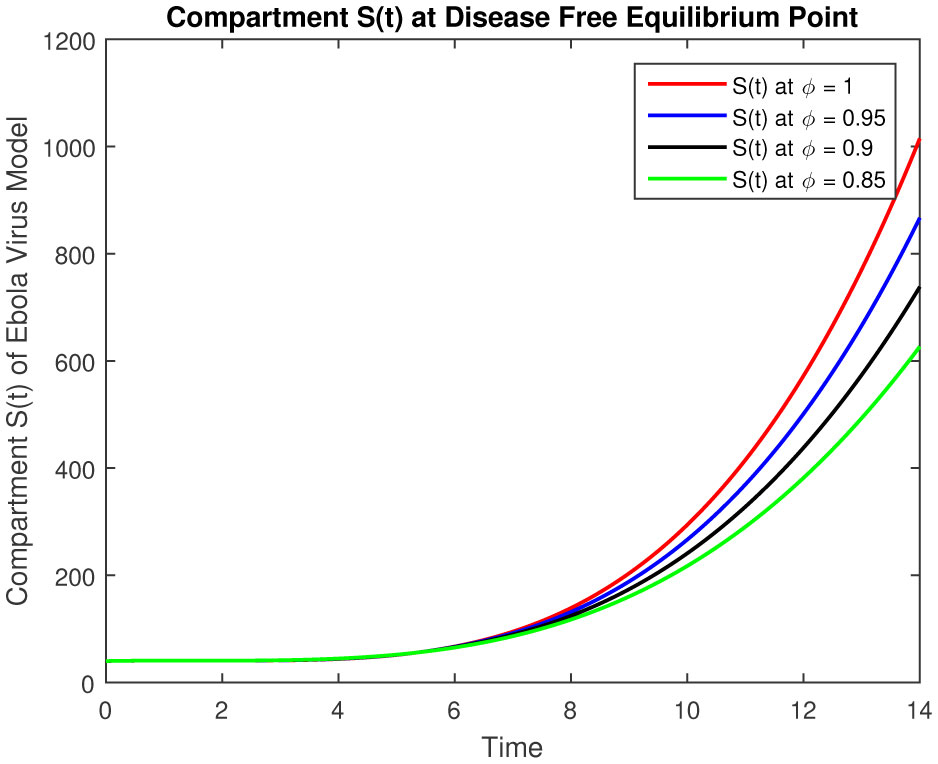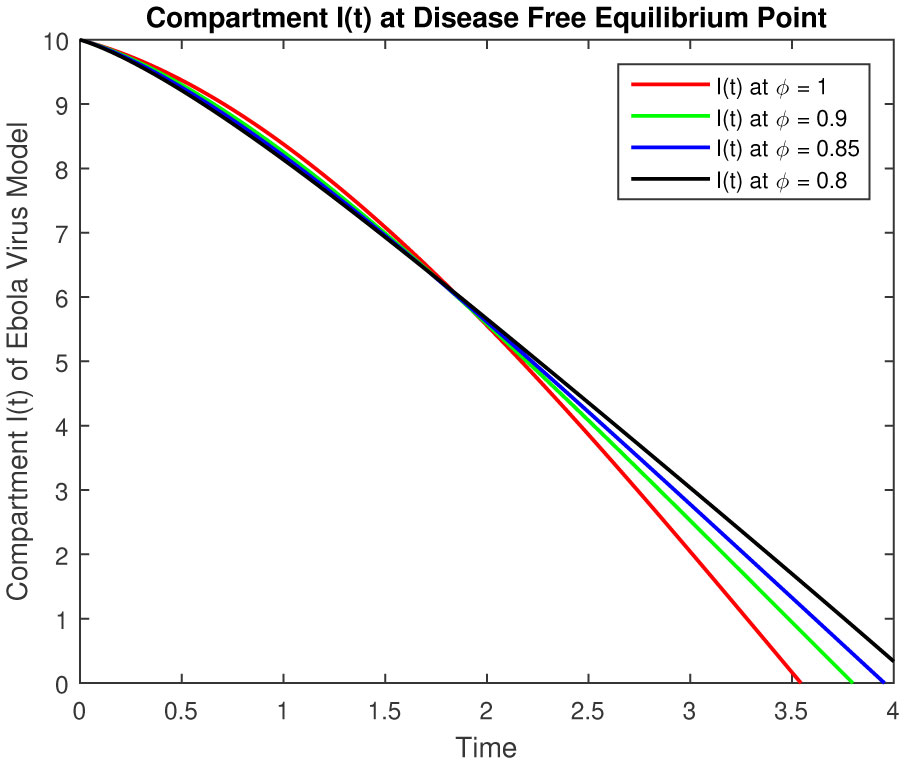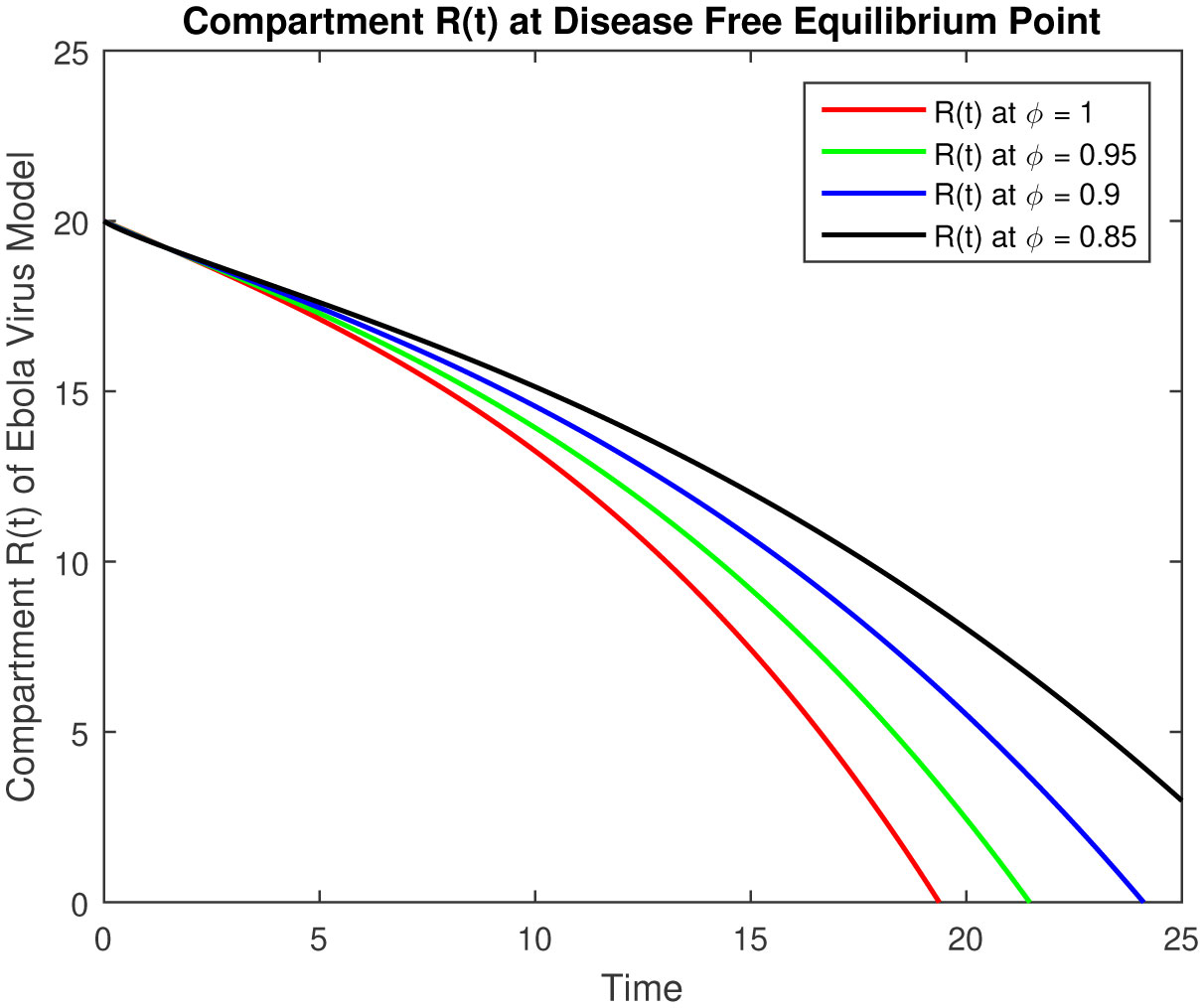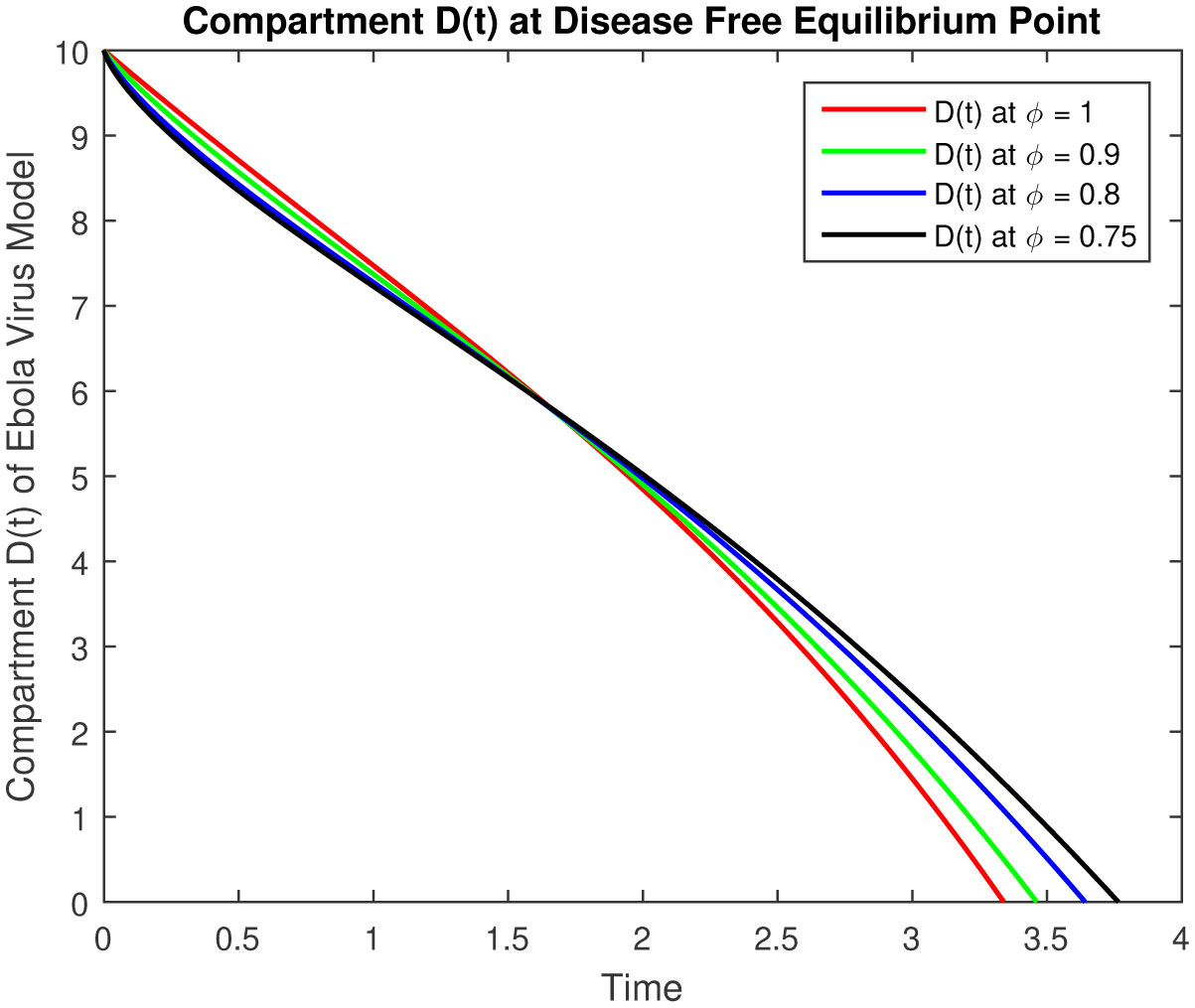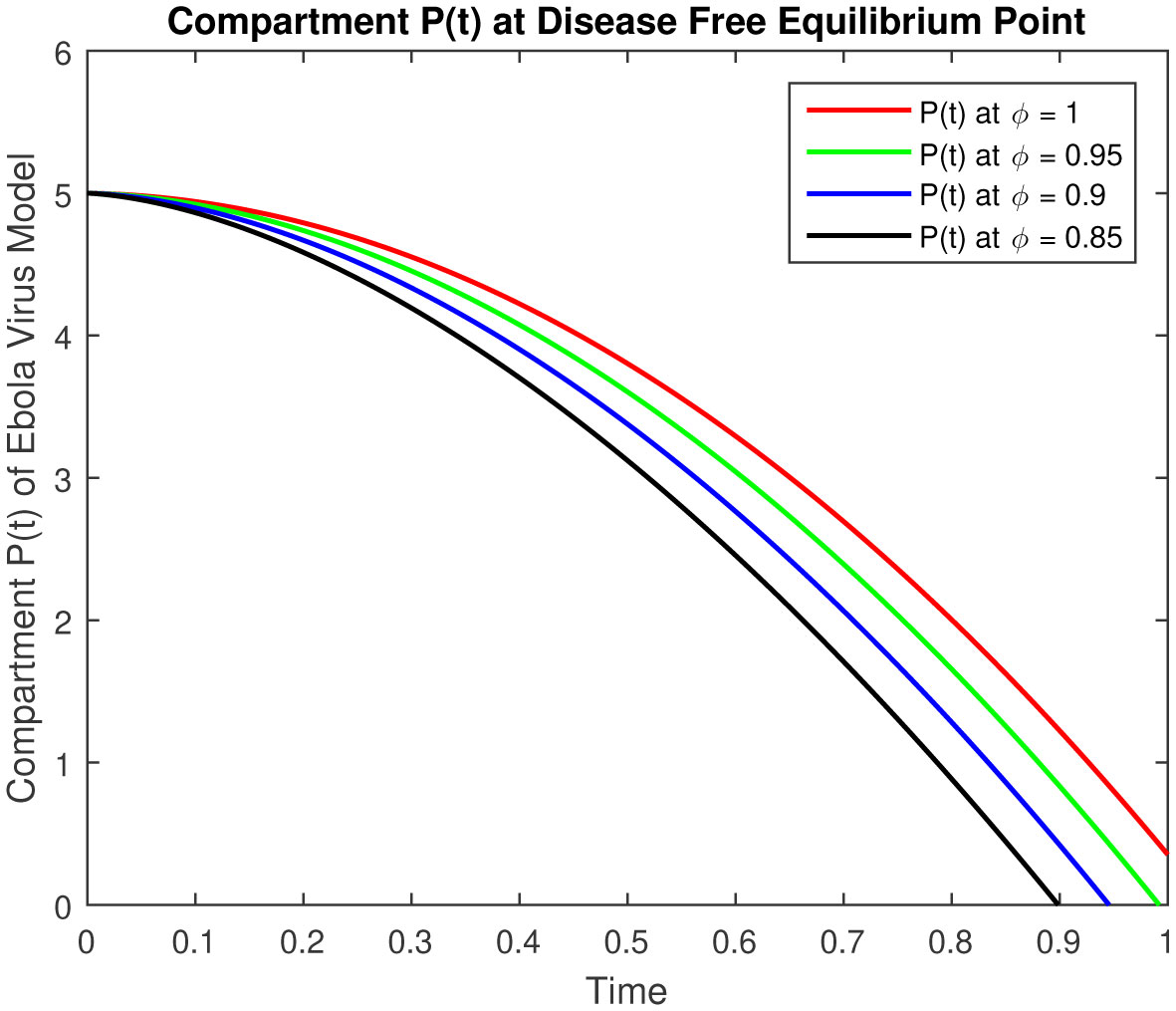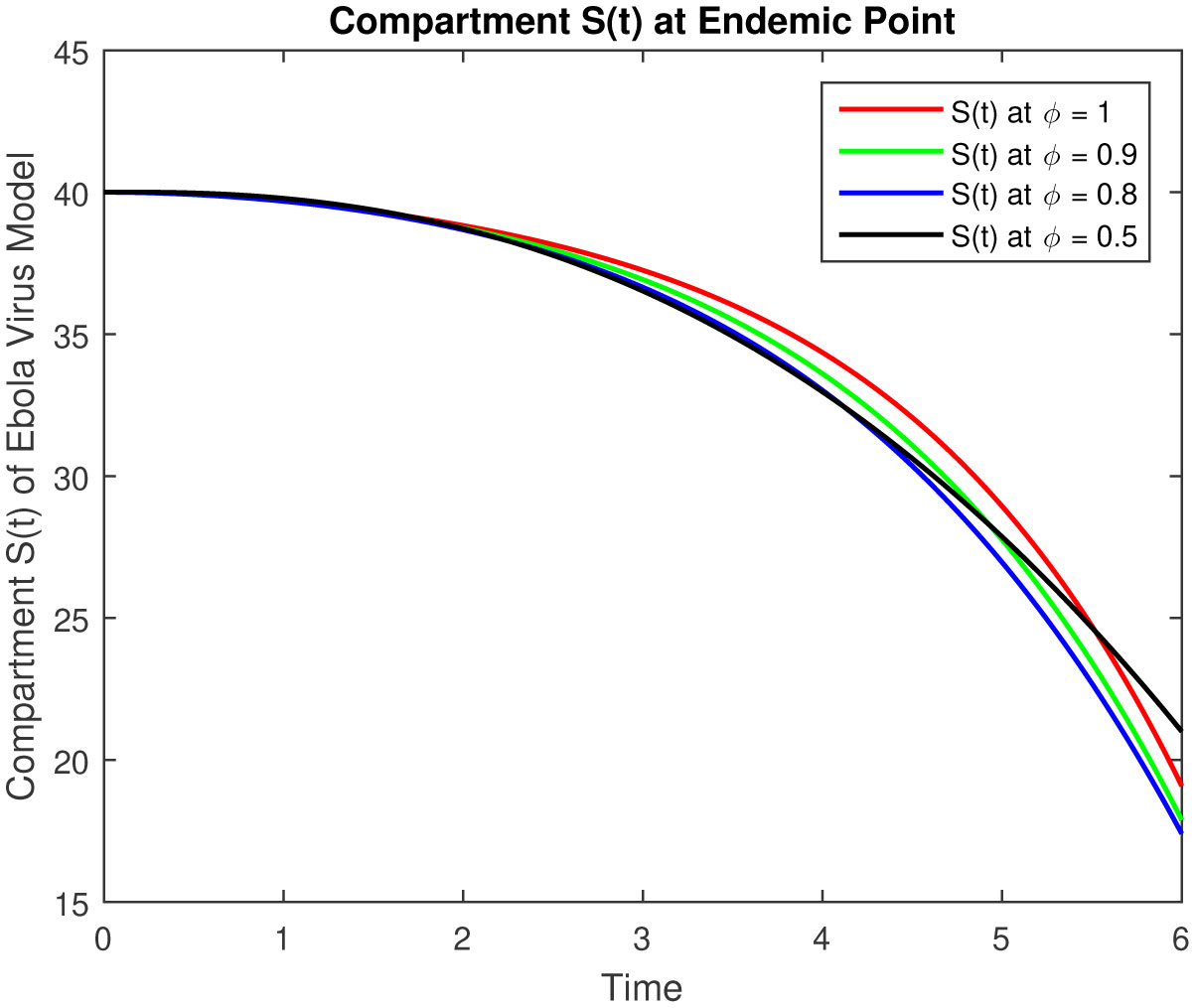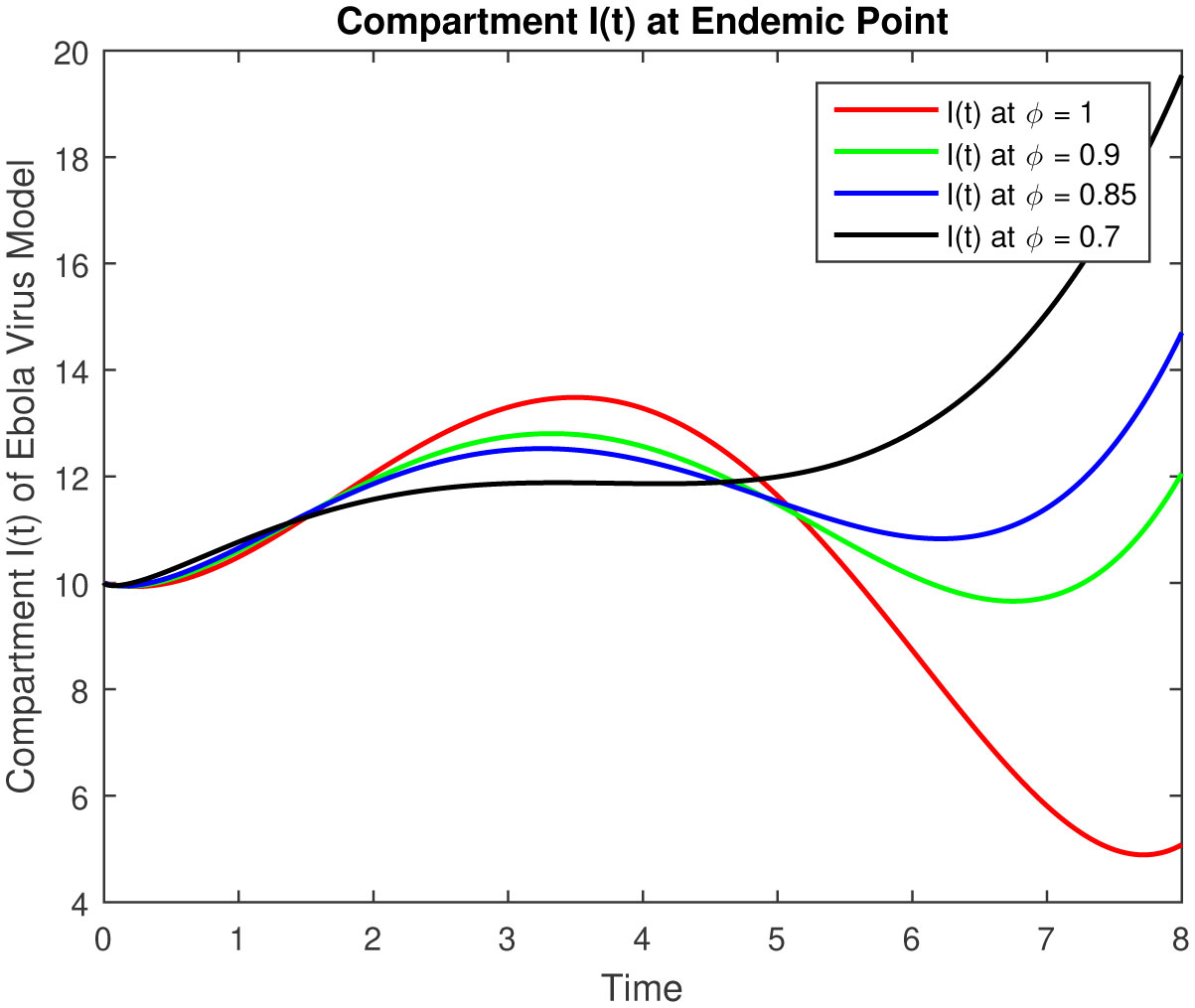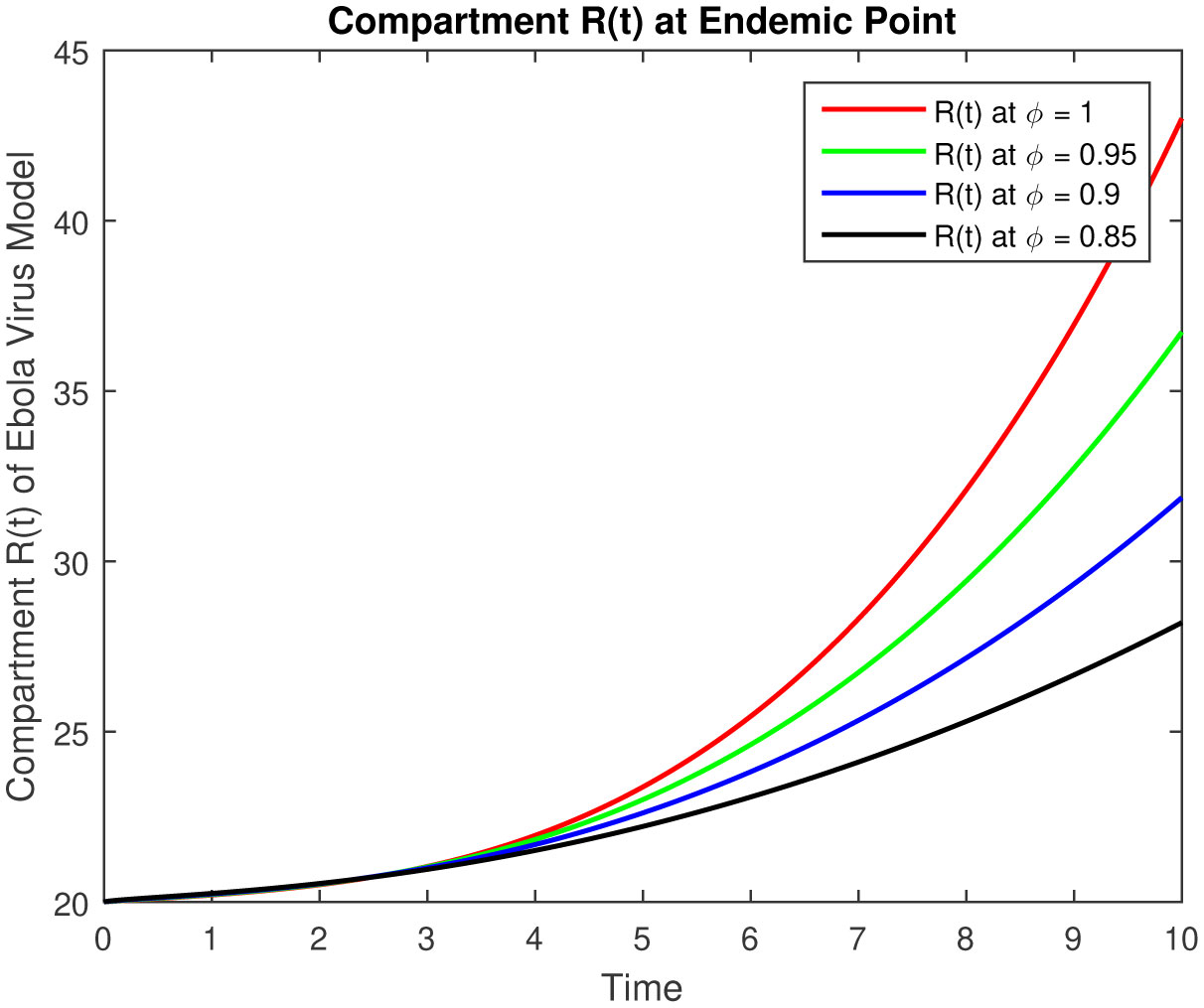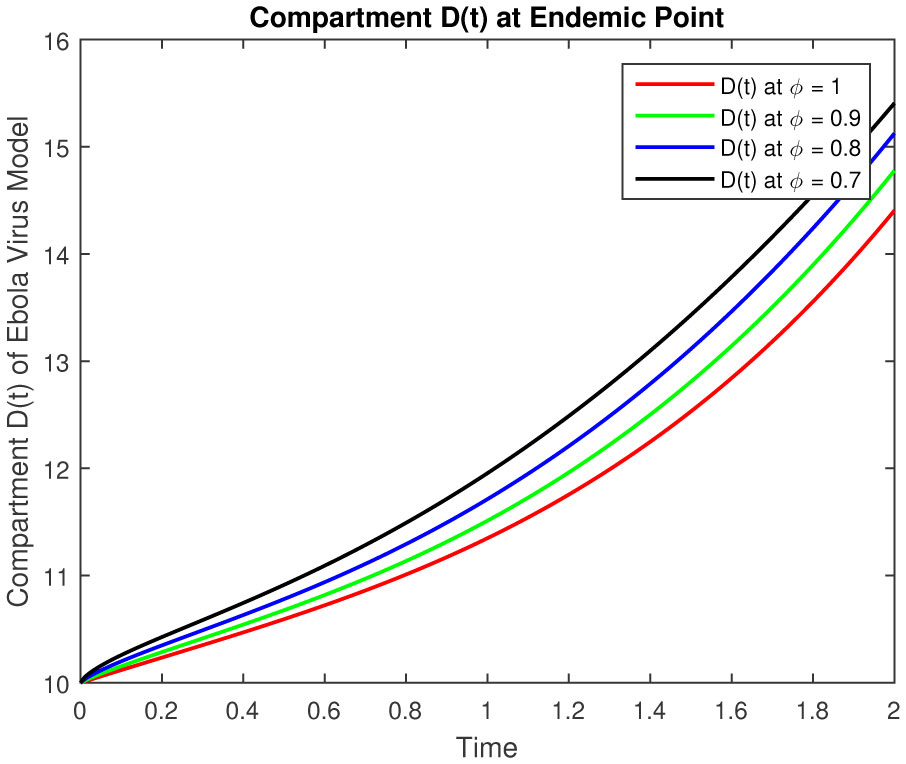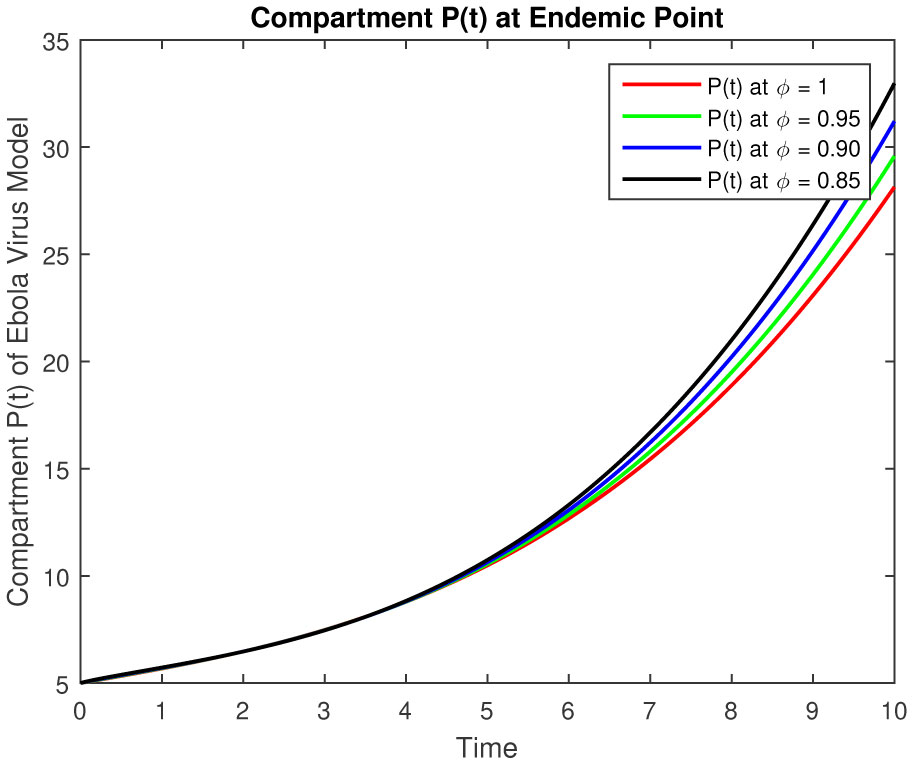1.
Introduction
In 2014, an outbreak of Ebola virus (Ebola) decimated many people in Western Africa. With more than 16,000 clinically confirmed cases and approximately 70% mortality cases, this was the more deadly outbreak compared to 20 Ebola threats that occurred since 1976 [1]. In Africa, and particularly in the regions that were affected by Ebola outbreaks, people live close to the rain-forests, hunt bats and monkeys and harvest forest fruits for food [2], [3].
In [4] develop a SIR type model which, incorporates both the direct and indirect transmissions in such a manner that there is a provision of Ebola viruses with stability and numerical analysis is discussed. A number of mathematical models have been developed to understand the transmission dynamics of Ebola and other infectious diseases outbreak from various aspects [5], [6]. A commonly used model for characterising epidemics of diseases including Ebola is the susceptible-exposed-infectious-recovered (SEIR) model [7], and extensions to this basic model include explicit incorporation of transmission from Ebola deceased hosts [1], [8] or accounting for mismatches between symptoms and infectiousness [9], [10].
Many researchers and mathematicians have shown that fractional extensions of mathematical integer-order models are a very systematic representation of natural reality [11], [12], [13]. Recently, a non-integer-order idea is given by Caputo and Fabrizio [14]. The primary goal of this article is to use a fresh non-integer order derivative to study the model of diabetes and to present information about the diabetes model solution's uniqueness and existence using a fixed point theorem [15]. Atangana and Baleanu [16] then proposed another non-singular derivative version using the Mittag Leffler kernel function. In many apps in the actual globe, these operators have been successful [17], [18], [19]. The few existing works [4], [8], [9], [20] on the mathematical modeling tells transmission of the virus and spread of Ebola virus on the population of human. The classical settings of mathematical studies tells about spread of EVD, such as SI model, SIR model, SEIR model [4], SEIRD model, or SEIRHD model. World medical association invented medicines for Ebola virus. Quantitative approaches and obtaining an analysis of the reproduction number of Ebola outbreak were important modeling for EVD epidemics. Demographic data on Ebola risk factors and on the transmission of virus were studied through the household structured epidemic model [4], [21]. Predications, different valuable insights, personal and genomic data for EVD was reported and discovered through mathematical models [22], [23]. In [24], the authors observed spread that follows a fading memory process and also shows crossover behaviour for the EVD. They captured this kind of spread using differential operators that posses crossover properties and fading memory using the SIRDP model in [4]. They also analyzed the Ebola disease dynamic by considering the Caputo, Caputo-Fabrizio, and Atangana-Baleanu differential operators.
In this paper, we developed fractional order Ebola virus model by using the Caputo method of complex nonlinear differential equations. Caputo fractional derivative operator β ∈ (0,1] works to achieve the fractional differential equations. Laplace with Adomian Decomposition Methodsuccessfully solved the fractional differential equations. Ultimately, numerical simulations are also developed to evaluate the effects of the device parameter on spread of disease and effect of fractional parameter β on obtained solution which are also assessed by tabulated results.
2.
Materials and method
2.1. Fractional order Ebola virus model
The classical model for Ebola virus model is given in [4], we developed the fractional order Ebola virus model in the followings equations
with initial conditions
Where
S(
t) represent the susceptible individuals,
I(
t) the individuals infected,
R(
t) the individuals recovered from the EVD,
D(
t) the individual that died with the Ebola virus and
P(
t) in the virus concentration in the environment. The susceptible human population is replenished by a constant recruitment at rate
Pi. susceptible individuals
S may acquire infection after effective contacts
β1 with infectious and
β2 is effective contact rate of deceased human individuals. They can also catch the infection through contact with a contaminated environment at rate
λ. Infectious individuals
I experience an additional death due to the disease at rate
δ and they are recovered at rate
γ. Deceased human individuals can be buried directly during funerals at rate
b. Susceptible, infectious and recovered individuals die naturally at rate
µ.
η,
ξ,
α, represent the decay rate, shedding rate of infected, and shedding rate of deceased, respectively. The recruitment rate of the Ebola virus in the environment expressed as
σ.
2.2. Equilibrium point and stability
Here system (2.1) is analyzed qualitatively analyzed for feasibility and numerical solution at disease free and endemic equilibrium point. For this purpose, we used
in system (1). For disease free equilibrium, we have
E = (
π/
µ,0,0,0,0) and endemic equilibrium is
where
is endemic equilibria of the system (1). Where reproductive number is
Theorem. 1 There is a unique solution for the initial value problem given in system (2.1), and the solution remains in R5, x ≥ 0.
Proof: We need to show that the domain R5, x ≥ 0 is positively invariant. Since
Hence the solution lies in feasible domain, so the uniqueness and solution of the system exists.
2.3. Numerical analysis of the model
Consider the fractional-order Ebola virus model (2.1), by using Caputo definition with Laplace transform, we have
by using the initial conditions (2.2), we get
We have followings infinite series solution
The nonlinearity
IS,
DS and
PS can be written as
where
Ak,
Bk and
Ck is called the Adomian polynomials. We have the followings results
Similarly, we have
We get the followings generalized form for analysis and numerical solution.
3.
Results
The results of fractional order model (2.1) is represented in followings tables and graphs.
4.
Discussion
The objective of our work is to develop a scheme of epidemic fractional Ebola virus model with Caputo fractional derivative also numerical solutions have been obtained by using the Laplace with the Adomian Decomposition Method. The results of fractional order Ebola virus model is presented and convergence results of fractional-order model are also presented to demonstrate the efficacy of the process. The analytical solution of the fractional-order Ebola virus model consisting of the non-linear system of the fractional differential equation has been presented by using the Caputo derivative. To observe the effects of the fractional parameter on the dynamics of the fractional-order model (2.1), we conclude several numerical simulations varying the values of parameter given in [4]. These simulations reveal that a change in the value affects the dynamics of the model. The numerical solutions at classical as well as different fractional values by using Caputo fractional derivative can be seen in Figures 1–5 for disease free equilibrium. The rate of susceptible individuals and pathogens decreases by reducing the fractional values to acquire the desired value, whereas the other compartment starts decreasing by increasing the fractional values. The fractional-order model shows the convergence with theoretical contribution and numerical results. The fractional-order parameter values show the impact of increasing or decreasing the disease. Also, we can fix the parameter values where the rate of infection is decrease and the recover rate will increase for some values which are representing in figures and tables. These results can be used for disease outbreak treatment and analysis without defining the control parameters in the model based on fractional values. In general, approaches to fractional-order modeling in situations with large refined data sets and good numerical algorithms may be worth it. The simulation and numerical solutions at classical as well as different fractional values by using Caputo fractional derivative can be seen in Figures 6–10 for endemic equilibrium as well as in Tables 1–5. Results in both cases are reliable at fractional values to overcome the outbreak of this epidemic and meet our desired accuracy. Results discuss in [1], [5] for classical model, but our results are on fractional order model, fractional parameters easily use to adjust the control strategy without defining others parameters in the model. Another important feature that plays a critical role in the 2014 EVD outbreaks is traditional/cultural belief systems and customs. For instance, while some individuals in the three Ebola-stricken nations believe that there is no Ebola, control the population or harvest human organs. We conclude that depending on the specific data set, the fractional order model either converges to the ordinary differential equation model and fits data similarly, or fits the data better and outperforms the ODE model.
5.
Conclusion
We develop a scheme of epidemic fractional Ebola virus model with Caputo fractional derivative for numerical solutions that have been obtained by using the Laplace with the Adomian Decomposition Method. In [24] the use of three different fractional operators on the Ebola disease model suggests that the fractional-order parameter greatly affects disease elimination for the non-integer case when decreasing α. We constructed a numerical solution for the Ebola virus model to show a good agreement to control the bad impact of the Ebola virus for the different period for diseases free and endemic equilibrium point as well. However, in this work, we introduced the qualitative properties for solutions as well as the non-negative unique solution for a fractional-order nonlinear system. It is important to note that the Laplace Adomian Decomposition Method is used for the Ebola virus fractional-order model differential equation framework is a more efficient approach to computing convergent solutions that are represented through figures and tables for endemic and disease-free equilibrium point. Convergence results of the fractional-order model are also presented to demonstrate the efficacy of the process. The techniques developed to provide good results which are useful for understanding the Zika Virus outbreak in our community. It is worthy to observe that fractional derivative shows significant changes and memory effects as compare to ordinary derivatives. This model will assist the public health planar in framing an Ebola virus disease control policy. Also, we will expand the model incorporating determinist and stochastic model comparisons with fractional technique, as well as using optimal control theory for new outcomes.









 DownLoad:
DownLoad:
